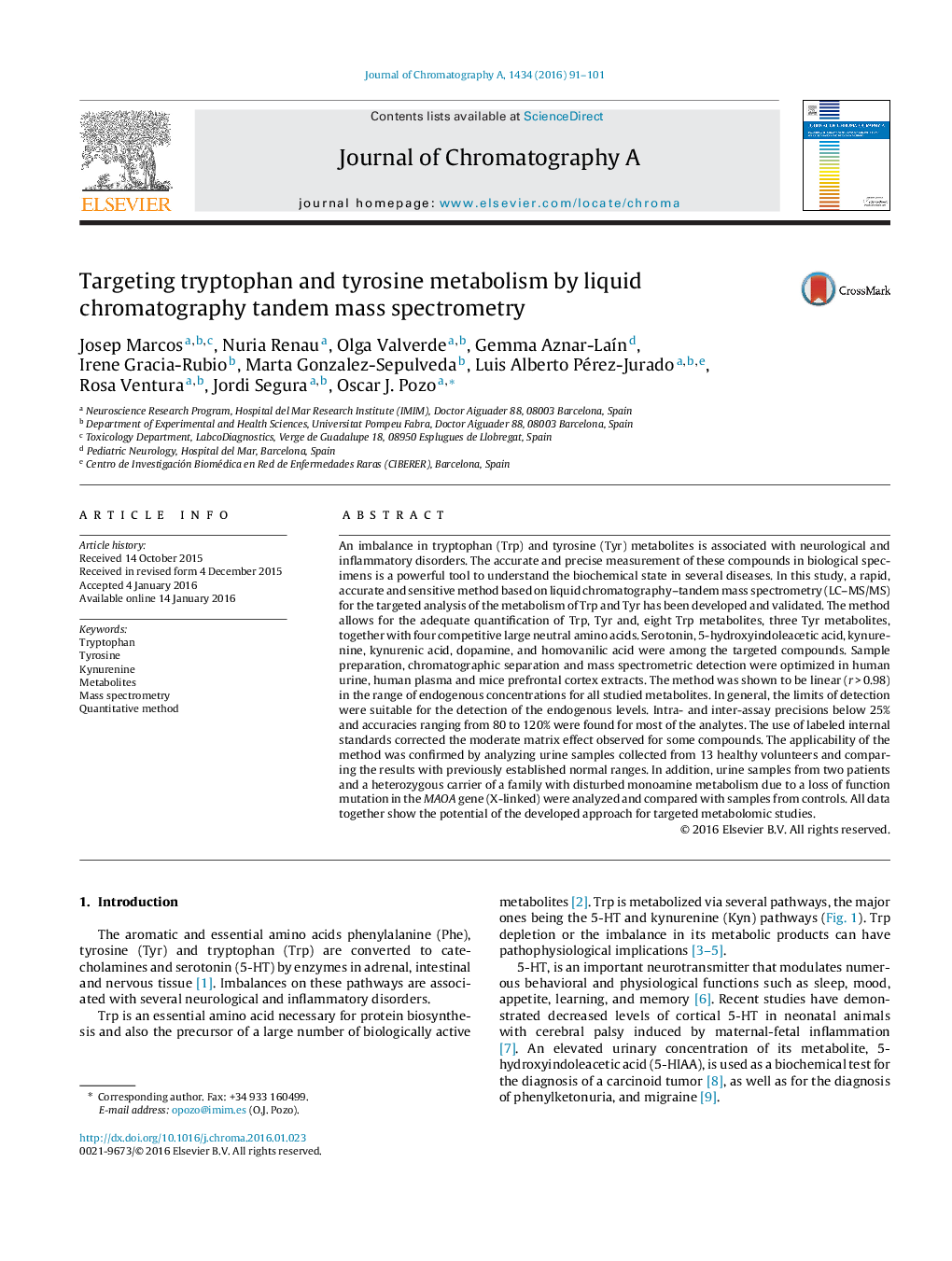| Article ID | Journal | Published Year | Pages | File Type |
|---|---|---|---|---|
| 1198974 | Journal of Chromatography A | 2016 | 11 Pages |
•An LC–MS/MS method for the study of tryptophan and tyrosine metabolism is presented.•Concurrent quantification of 4 competitive large neutral amino acids is offered.•Fully validated in human serum and urine, and in mice prefrontal cortex extracts.•Urinary concentrations for 18 analytes in 13 healthy individuals were calculated.•Applicability proved by analyzing samples from a family with the Brunner syndrome.
An imbalance in tryptophan (Trp) and tyrosine (Tyr) metabolites is associated with neurological and inflammatory disorders. The accurate and precise measurement of these compounds in biological specimens is a powerful tool to understand the biochemical state in several diseases. In this study, a rapid, accurate and sensitive method based on liquid chromatography–tandem mass spectrometry (LC–MS/MS) for the targeted analysis of the metabolism of Trp and Tyr has been developed and validated. The method allows for the adequate quantification of Trp, Tyr and, eight Trp metabolites, three Tyr metabolites, together with four competitive large neutral amino acids. Serotonin, 5-hydroxyindoleacetic acid, kynurenine, kynurenic acid, dopamine, and homovanilic acid were among the targeted compounds. Sample preparation, chromatographic separation and mass spectrometric detection were optimized in human urine, human plasma and mice prefrontal cortex extracts. The method was shown to be linear (r > 0.98) in the range of endogenous concentrations for all studied metabolites. In general, the limits of detection were suitable for the detection of the endogenous levels. Intra- and inter-assay precisions below 25% and accuracies ranging from 80 to 120% were found for most of the analytes. The use of labeled internal standards corrected the moderate matrix effect observed for some compounds. The applicability of the method was confirmed by analyzing urine samples collected from 13 healthy volunteers and comparing the results with previously established normal ranges. In addition, urine samples from two patients and a heterozygous carrier of a family with disturbed monoamine metabolism due to a loss of function mutation in the MAOA gene (X-linked) were analyzed and compared with samples from controls. All data together show the potential of the developed approach for targeted metabolomic studies.
